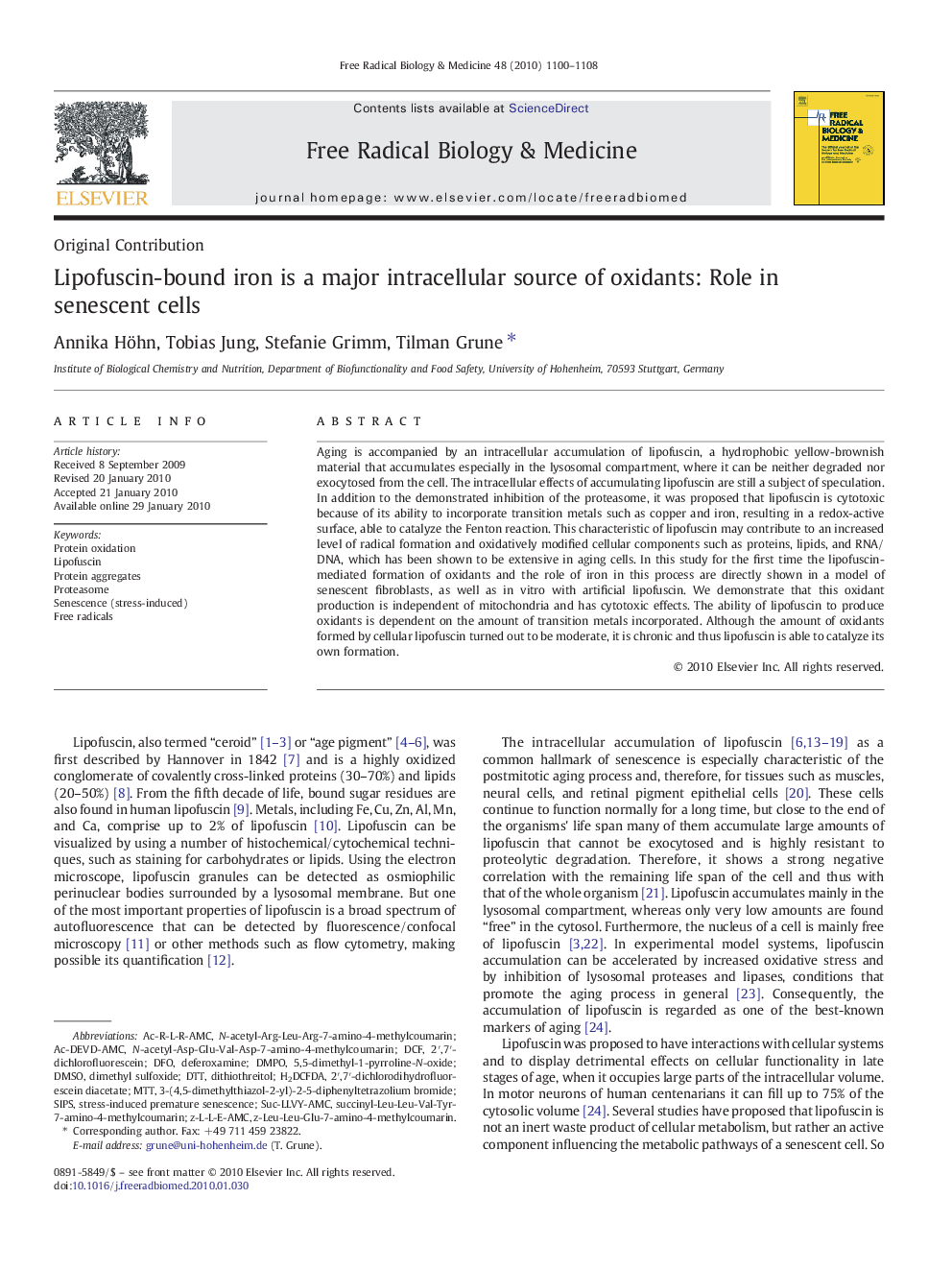| کد مقاله | کد نشریه | سال انتشار | مقاله انگلیسی | نسخه تمام متن |
|---|---|---|---|---|
| 1909668 | 1046735 | 2010 | 9 صفحه PDF | دانلود رایگان |

Aging is accompanied by an intracellular accumulation of lipofuscin, a hydrophobic yellow-brownish material that accumulates especially in the lysosomal compartment, where it can be neither degraded nor exocytosed from the cell. The intracellular effects of accumulating lipofuscin are still a subject of speculation. In addition to the demonstrated inhibition of the proteasome, it was proposed that lipofuscin is cytotoxic because of its ability to incorporate transition metals such as copper and iron, resulting in a redox-active surface, able to catalyze the Fenton reaction. This characteristic of lipofuscin may contribute to an increased level of radical formation and oxidatively modified cellular components such as proteins, lipids, and RNA/DNA, which has been shown to be extensive in aging cells. In this study for the first time the lipofuscin-mediated formation of oxidants and the role of iron in this process are directly shown in a model of senescent fibroblasts, as well as in vitro with artificial lipofuscin. We demonstrate that this oxidant production is independent of mitochondria and has cytotoxic effects. The ability of lipofuscin to produce oxidants is dependent on the amount of transition metals incorporated. Although the amount of oxidants formed by cellular lipofuscin turned out to be moderate, it is chronic and thus lipofuscin is able to catalyze its own formation.
Journal: Free Radical Biology and Medicine - Volume 48, Issue 8, 15 April 2010, Pages 1100–1108